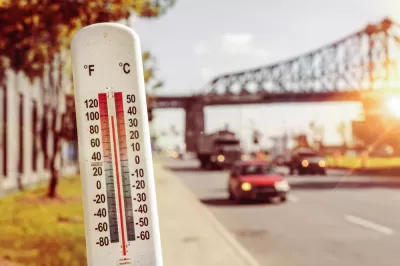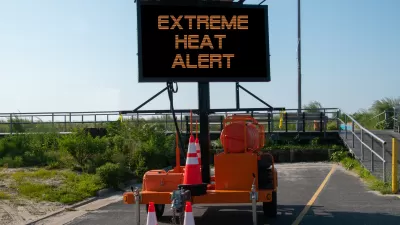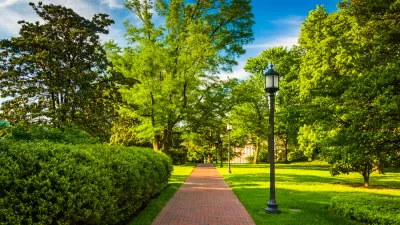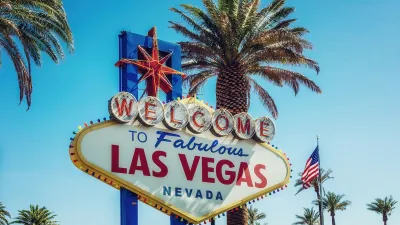Cities can take action to improve conditions during extreme heat events and prevent heat-related deaths, many of which occur in low-income communities.

As cities grow, so does their potential to generate heat, writes Matt Simon. “A city’s roads, buildings, and other infrastructure absorb the sun’s energy, raising temperatures far above those in surrounding rural areas.”
Combined with climate change, this “hyperlocal and erratic” effect, which can vary widely even from house to house, is making it “increasingly difficult to keep vulnerable (and rapidly growing) populations safe during extreme heat events.” As Simon points out, “For example, different kinds of building materials, like brick or wood, absorb and release heat differently. And tall buildings block winds that would otherwise cool a landscape.” Additionally, “This is a problem that doesn’t end when the sun goes down, because the built environment slowly releases its warmth throughout the night, keeping temperatures high.” And “Low-income neighborhoods have it worse, as apartments often lack AC to bring cool air in and proper insulation to keep warm air out. These neighborhoods also have less tree cover, which in richer neighborhoods helps attenuate the heat.”
Edith de Guzman, director and cofounder of the Los Angeles Urban Cooling Collaborative and her colleagues used simulations to assess how heat mitigation measures could improve outcomes in Los Angeles. “They found that making simple tweaks to the built environment, primarily adding trees and painting roofs light colors, would save one in four lives that would normally be lost to heat events.”
Simon asserts that “Perhaps it's time to think of heat as a treatable disease that affects a city, not just its people. Working with community leaders, cities like LA can develop more green spaces, for example,” and implement other strategies to help save lives during the heat waves that are becoming more and more common.
FULL STORY: Extreme Heat Is a Disease for Cities. Treat It That Way

Study: Maui’s Plan to Convert Vacation Rentals to Long-Term Housing Could Cause Nearly $1 Billion Economic Loss
The plan would reduce visitor accommodation by 25,% resulting in 1,900 jobs lost.

North Texas Transit Leaders Tout Benefits of TOD for Growing Region
At a summit focused on transit-oriented development, policymakers discussed how North Texas’ expanded light rail system can serve as a tool for economic growth.

Why Should We Subsidize Public Transportation?
Many public transit agencies face financial stress due to rising costs, declining fare revenue, and declining subsidies. Transit advocates must provide a strong business case for increasing public transit funding.

How to Make US Trains Faster
Changes to boarding platforms and a switch to electric trains could improve U.S. passenger rail service without the added cost of high-speed rail.

Columbia’s Revitalized ‘Loop’ Is a Hub for Local Entrepreneurs
A focus on small businesses is helping a commercial corridor in Columbia, Missouri thrive.

Invasive Insect Threatens Minnesota’s Ash Forests
The Emerald Ash Borer is a rapidly spreading invasive pest threatening Minnesota’s ash trees, and homeowners are encouraged to plant diverse replacement species, avoid moving ash firewood, and monitor for signs of infestation.
Urban Design for Planners 1: Software Tools
This six-course series explores essential urban design concepts using open source software and equips planners with the tools they need to participate fully in the urban design process.
Planning for Universal Design
Learn the tools for implementing Universal Design in planning regulations.
Ascent Environmental
Borough of Carlisle
Institute for Housing and Urban Development Studies (IHS)
City of Grandview
Harvard GSD Executive Education
Toledo-Lucas County Plan Commissions
Salt Lake City
NYU Wagner Graduate School of Public Service





























